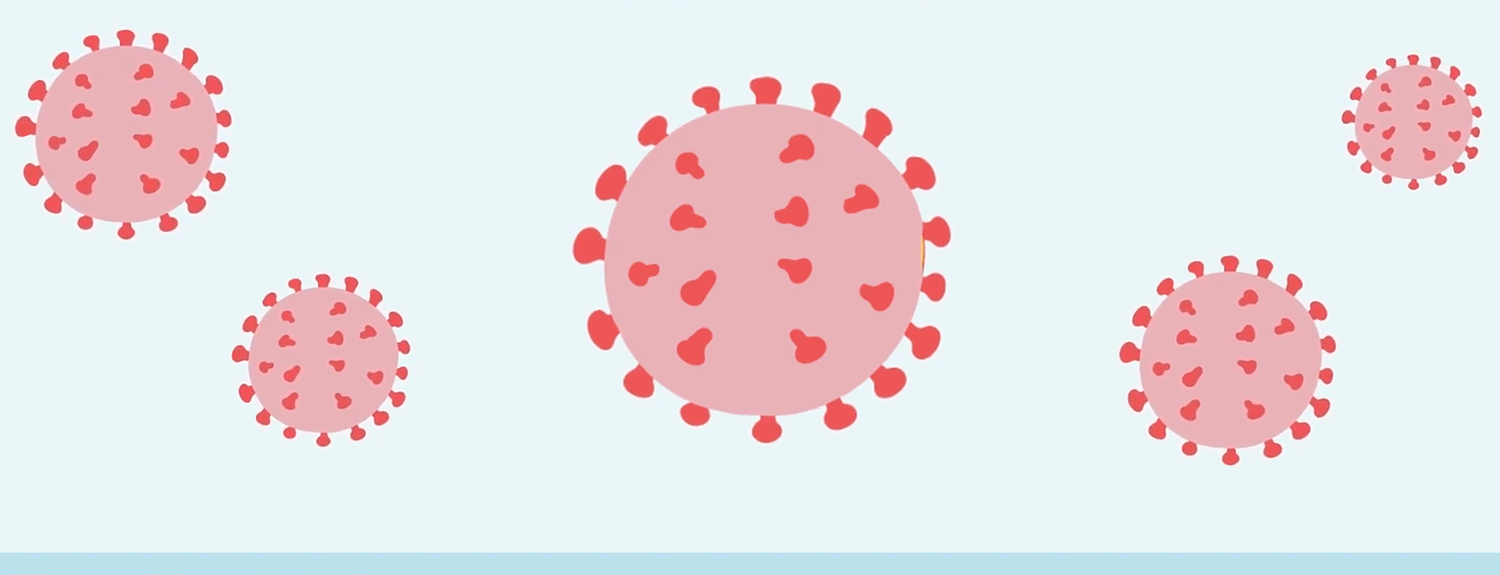
COVID-19 Infographics: Bringing science and art together
A unique collaboration showcases important COVID-19 research in a creative way
Published03/31/2021 , by Nehwoen Luogon-Bojkov
Last fall, the Bell Museum was thinking about ways to bring important health and science information about COVID-19 to museum visitors in ways that were approachable and accessible for all ages. Holly Menninger, the Bell’s director of public engagement and science learning, sought out a partnership with the Science Communication Lab at UMN, led by Michael Winikoff, communications director of the university’s biotechnology institute. The result of their unique collaboration, now on view on video screens throughout the museum, emphasizes key public health messages, showcases important COVID-19-related research at the university, and highlights the talents of the student design team at the Science Communication Lab.
The Science Communication Lab brings scientists, writers, and designers together in a collaborative environment to create unique science content for a broad public audience. The Bell provided the group a creative brief that outlined the project goals, target audience, guidelines for tone and communication strategy, and some suggested content topics. The team ran from there, brainstorming how best to present the information, identifying areas where deeper research was needed, and sketching out storyboards and style guides. Each student selected a topic that they were most interested in and took ownership for that piece of the final project. Menninger and Adrienne Wiseman, the Bell’s director of business and marketing, met with students several times over Zoom to review content and offer constructive feedback.
For Emma Delisi, a design intern working on the project, it was an opportunity to apply her skillset in an area that was unfamiliar, but fascinating. “It’s exciting to help people understand something that they might not have known about before they had walked into the museum.”
One of the challenges Menninger posed to the team was to create content that was evergreen, able to hold up to the rapidly changing news cycle and quickly advancing science. “A lot of the information is COVID-19 specific, but also holds true for other infectious diseases. The diagnostic tools developed at the U can also help diagnose other lung conditions, like tuberculosis,” Michael Winikoff says.
The team also had to address several significant design challenges. How do you create a cohesive final product with designers that each have their unique style while also working remotely? Additionally, they had to consider how best to create a compelling product that would stand out and grab visitors’ attention amidst the other exciting content and exhibits in the museum. The team chose to use animation rather than static images to share information with visitors in compelling ways.
As the research and animation came together, the team worked with public health experts at the University of Minnesota to review the content for accuracy and alignment with best practices in public health messaging. The animations went live on view March 12, 2021, with the Bell Museum’s reopening. Check them out in person Friday–Sunday, 10 am–4 pm at the Bell Museum or watch the videos below:

